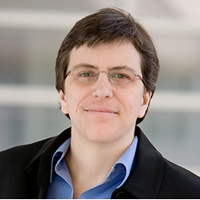Head Start Programs Have Significant Benefits for Children at the Bottom of the Skill Distribution
By Marianne P. Bitler, UC Davis; Hilary Hoynes, UC Berkeley; and Thurston Domina, UNC
Preschool interventions are arguably one of the most important elements of support for poor families. Head Start, a federal program for children in low-income families administered through the Department of Health and Human Services, is a case in point. While research shows a range of benefits lasting beyond preschool for participants, evidence of the “fade-out” of cognitive gains of the preschool years and the differential impact of the program on children with different skill levels in the preschool population has prompted debate over its efficacy. Our recent work is the first comprehensive analysis of how modern Head Start impacts vary across the skill distribution in the preschool and early elementary period. We find evidence of a large and positive short-term effect of Head Start, and that cognitive gains are largest at the bottom of the achievement spectrum, particularly among Hispanic children.1 The results of our study and others showing a positive effect in other areas add to the evidence of the success of Head Start in improving the wellbeing of poor children.
Key Facts
- Head Start leads to positive and large gains in vocabulary knowledge and receptive language skills during the preschool period, particularly for children with low achievement levels and for Spanish-language speakers.
- Gains for Spanish speakers from Head Start may persist into early elementary school.
- Head Start does not seem to have a short-term impact on children’s social and emotional outcomes; it does have a longer-term impact on wellbeing in early adolescence and young adulthood.
Head Start is the primary federal preschool program for low-income children in the U.S. In 2016 Head Start and Early Head Start served over 900,000 children with a budget of nearly $9 billion.2 The program aims to narrow inequalities in educational outcomes and raise educational attainment levels by providing matching funds to community programs that provide preschool, healthcare and nutritional services to children in poor families (local partners must provide 25 percent of the federal funding, which equals 20 percent of the total budget.3) Since Head Start’s establishment in 1965, decades of research has documented its impact, however, there is debate over how and for whom Head Start works best.
Research has shown that Head Start impacts children in a range of areas related to their development, from supporting early cognitive gains4 to health, social and emotional development in adolescence.5 While the early cognitive gains tend to diminish or “fade out” as children enter elementary school, there is evidence of benefits that appear in adolescence and young adulthood.10
Though some researchers have suggested that there is sufficient evidence of program effectiveness, there has been criticism about gaps in evidence. For example, a 1995 study found that test scores for both White and African-American preschool students participating in Head Start improved, but these gains were quickly lost for African-American children.6,7 Most other, earlier studies rely on comparisons within families, with one child participating in Head Start and another one who does not. There has been a call for a deeper analysis of the mechanisms of the program’s impact and why it affects certain groups of preschoolers differently.8
Measuring the Impact of Head Start Across the Achievement Distribution
Our study analyzed the effect of the Head Start program on child cognitive and social and emotional outcomes, using data from the Head Start Impact Study (HSIS), a longitudinal randomized control study of around 5,000 children ages three and four from 84 nationally representative communities in the U.S. where local Head Start programs were oversubscribed.9 The HSIS, which began in 2002, aims to determine the impact of the program on school readiness of children and under which conditions Head Start works best and for which children. The randomized design of HSIS makes it possible to identify the effect of Head Start independently of other factors on child outcomes, and it has resulted in a wealth of research on the program’s short and medium-term impact.
In our study, we comprehensively examine the effects of Head Start across the distribution of children. In particular, we compared the distribution of scores for students randomly assigned to Head Start with the distribution of students randomly assigned to a control condition. We also compare how the estimated program impacts vary across children with different cognitive skills prior to enrollment and across different demographic groups. These analyses allow us to test whether there is a compensatory effect (larger gains for those with fewer skills) and whether a higher level of human capital pre-exposure to Head Start implies larger gains. Literature on Head Start has focused to some extent on both of these hypotheses.
Using the 3-year old cohort of the HSIS sample, we measured children’s cognitive outcomes (tests of vocabulary knowledge and receptive language as well as early math and literacy measures) and social and emotional outcomes (based on teacher and parent reports of child behavior) in the Head Start year through first grade. We controlled for demographic and other characteristics. We also studied variation in the effect of Head Start by looking at differences across race/ethnicity groups, by the child speaking Spanish or English, by baseline levels of cognitive skill, by gender and by mother’s education.
Head Start Results in Cognitive Gains in the Preschool years, with a Greater Benefit for the Bottom of the Distribution
Our results show that Head Start participation has an important (and large) short-term benefit to children during preschool, supporting their readiness for elementary school. Importantly, we find larger gains in cognitive skills in the bottom of the skill distribution, though these gains fade out when children enter elementary school. The children who benefit most from Head Start are those with limited English, including Spanish speakers, and the largest gains accrue to the bottom of the distribution of test scores. In our results, differences in effects across the distribution are not related to differences in program take-up or the counterfactual care setting.1
Our study does not show that Head Start has a social or emotional impact on preschoolers. Although our social and emotional measures of “hyperactivity” and “externalizing behavior” showed a statistically significant decrease, the other seven indicators did not. This stands in contrast to a number of earlier studies on the longer-term impact of Head Start that do show a positive relationship with behavior and social and emotional wellbeing later on.10,11
Overall, our study supports the Head Start program in its positive and significant impact on school readiness of preschool children, particularly those at the bottom of the achievement distribution and Spanish speakers. While these gains do decline as children enter elementary school, other research points to gains that appear later in life. Initiatives to change or restrict the Head Start program should consider that it may be supporting poor children in ways that aren’t currently fully understood or documented.
Marianne P. Bitler is a professor of Economics at UC Davis.
Hilary Hoynes is a Professor of Economics and Public Policy and holds the Haas Distinguished Chair in Economic Disparities at the University of California Berkeley.
Thurston Domina is Associate Professor of Educational Policy and Sociology in the School of Education at the University of North Carolina, Chapel Hill.
References
[1] Bitler, Marianne P et al. 2016. “Experimental Evidence on Distributional Effects of Head Start.” National Bureau of Economic Research.
[2] Department of Health and Human Services. “Head Start Program Facts. 2016 Fiscal Year.” Office of Head Start. 2016.
[3] Office of Head Start. National Center of Program Management and Fiscal Operations. 2014. “Head Start Non-federal Share Match: At a Glance.”
[4] Currie, Janet. 2001. “Early Childhood Programs.” Journal of Economic Perspectives.
[5] Ludwig, Jens et al. 2007. “Does Head Start Improve Children’s Life Chances? Evidence From a Regression Discontinuity Approach.” Quarterly Journal of Economics.
[6] Garces, E. et al. 2002. “Longer-term Effects of Head Start.” American Economic Review.
[7] Currie, Janet et al. 1995. “Does Head Start Make a Difference?” The American Economic Review.
[8] Ludwig, Jens. 2008. “Long-term Effects of Head Start on Low-income Children.” Annals of the New York Academy of Sciences.
[9] Department of Health and Human Services, Office of Planning, Research and Evaluation. “Head Start Impact Study and Follow-up: 2000-2015.”
[10] Deming, David. 2009. “Early Childhood Intervention and Life-cycle Skill Development: Evidence from Head Start.” American Economic Journal: Applied Economics.
[11] Carneiro, Pedro. et al. “Long-term Impacts of Compensatory Preschool on Health and Behavior: Evidence from Head Start. American Economic Journal:” Applied Economics.
#povertyresearch










